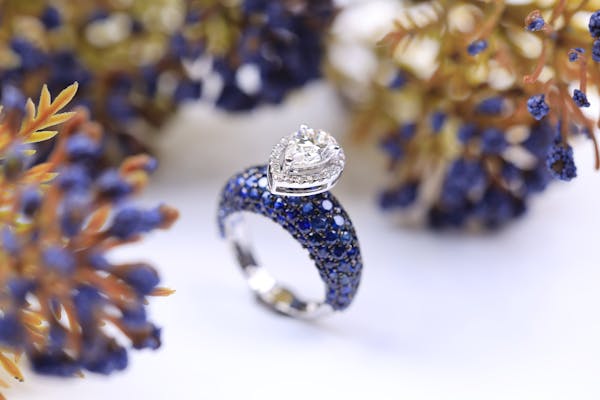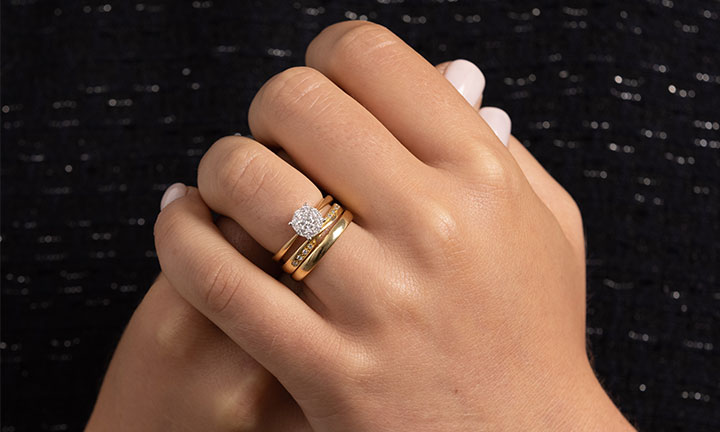When it comes to choosing the perfect gemstone for your engagement ring or jewelry, the decision between Moissanite vs Diamond can be daunting. Both gems offer unique qualities and characteristics that appeal to different preferences and budgets. In this comprehensive comparison, we’ll delve deep into the differences between moissanite and diamond, helping you make an informed decision that suits your needs and desires.
What is Moissanite?
First discovered in 1893 by French chemist Henri Moissan, moissanite is a naturally occurring silicon carbide with remarkable brilliance and fire. However, due to its scarcity in nature, moissanite available in the market today is predominantly lab-created. Lab-created moissanite offers the same optical properties as natural moissanite but at a fraction of the cost.
The Brilliance of Diamond
Diamonds, on the other hand, have been cherished for centuries for their unrivaled brilliance, durability, and rarity. Formed deep within the Earth’s mantle under extreme pressure and heat, diamonds symbolize everlasting love and strength. While natural diamonds are highly sought after, technological advancements have led to the creation of lab made diamonds, offering the same chemical composition and optical properties as natural diamonds.
Comparing Brilliance and Fire
One of the key factors to consider when choosing between moissanite and diamond is their brilliance and fire. Brilliance refers to the amount of light reflected from the gemstone’s surface, while fire refers to the dispersion of light into spectral colors.
Moissanite Brilliance and Fire
Moissanite exhibits exceptional brilliance, surpassing that of diamonds. With a refractive index higher than that of diamonds, moissanite reflects light with incredible intensity, resulting in a mesmerizing sparkle. Additionally, moissanite’s dispersion rate is higher than that of diamonds, creating stunning flashes of color known as fire.
Diamond Brilliance and Fire
Diamonds are renowned for their unparalleled brilliance and fire. The unique arrangement of carbon atoms in a diamond lattice allows for maximum light reflection, resulting in a dazzling display of brilliance. While diamonds may not have the same dispersion rate as moissanite, their innate brilliance is incomparable, making them a timeless choice for jewelry enthusiasts.
Durability and Hardness
Another crucial aspect to consider when choosing between moissanite and diamond is their durability and hardness.
Moissanite Durability and Hardness
Moissanite boasts an impressive hardness of 9.25 on the Mohs scale, making it one of the hardest gemstones known to man. This exceptional hardness ensures that moissanite is resistant to scratching, chipping, and abrasion, making it suitable for everyday wear.
Diamond Durability and Hardness
Diamonds reign supreme in terms of hardness, scoring a perfect 10 on the Mohs scale. This unparalleled hardness makes diamonds extremely durable and resistant to scratches, making them ideal for engagement rings and heirloom jewelry that withstand the test of time.
Color and Clarity
Both moissanite and diamonds come in a variety of colors and clarities, offering endless possibilities for customization and personalization.
Moissanite Color and Clarity
Most lab-created moissanite gems are nearly colorless, with a slight yellow or green hue in some instances. However, moissanite’s high clarity rating ensures that any imperfections are minimal and barely visible to the naked eye, resulting in a stunning and flawless appearance.
Diamond Color and Clarity
Diamonds come in a spectrum of colors, ranging from colorless to fancy colored diamonds. The most prized diamonds are those with minimal to no color, as they allow for maximum light reflection and brilliance. Additionally, diamonds are graded based on their clarity, with flawless diamonds being exceptionally rare and valuable.
Cost Comparison
One of the most significant advantages of choosing moissanite over diamonds is the cost.
Moissanite Cost
Lab-created moissanite is significantly more affordable than diamonds of comparable size and quality. This affordability allows couples to opt for larger and more intricate designs without breaking the bank, making moissanite an attractive alternative for budget-conscious individuals.
Diamond Cost
Diamonds, particularly natural diamonds, can be prohibitively expensive, with prices varying based on the diamond’s carat weight, color, clarity, and cut. While lab-grown diamonds offer a more affordable option compared to natural diamonds, they still command a higher price tag than moissanite.
Conclusion: Making the Right Choice
In conclusion, both moissanite and diamonds offer unique qualities and characteristics that cater to different preferences and budgets. Whether you prioritize brilliance, durability, or cost, there’s a gemstone that’s perfect for you. Ultimately, the decision between moissanite and diamond boils down to personal preference, style, and budget. Whichever gemstone you choose, rest assured that you’ll be adorned with a timeless symbol of love and beauty that will last a lifetime.


